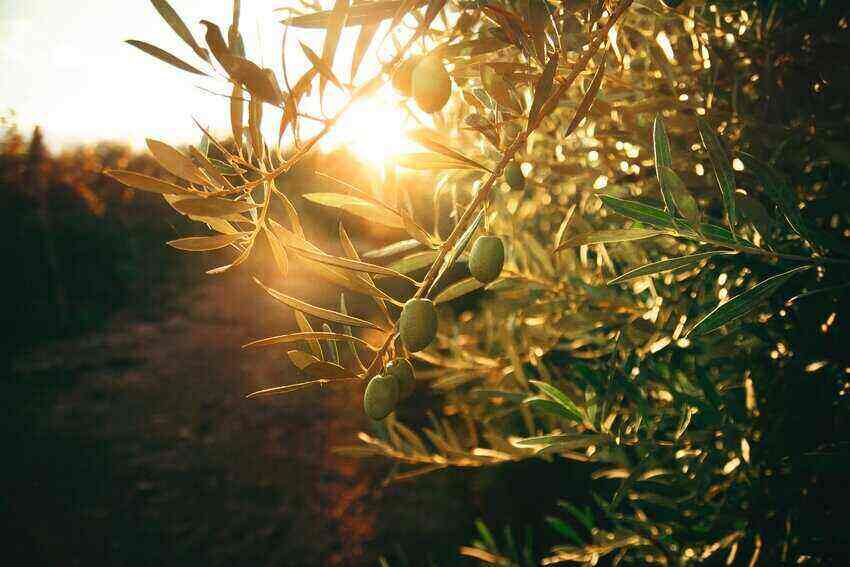Olive trees grow better in full sunshine but you have to give proper and regular care for overall health. But sometimes you may face more or less major issues with olive trees that need instant actions so that your tree doesn’t die.
Why are olive tree leaves curling and falling off? There might be a number of different reasons behind it. Olive tree leaf curling is caused by some factors, including overwatering, transplant shock, insect infestation, etc. Furthermore, olive leaves can curl (like yucca) and drop off if you use excessive amounts of fertilizer or pesticides.
If you’re noticing olive tree leaves curling (like paddle plant) problems don’t worry here we give you the exact ideas to solve all your problems. Let’s get started!
Causes and Solutions of Olive Tree Leaves Curling and Falling Off

Reasons for Olive Tree Leaves Curling and Falling Off
Here are the major reasons why your olive tree leaves are curling or dropping that could even cause the death of your olive trees. So, let’s check out which is match your infected olive trees.
1. Virus Transmission
Curling leaves (like curry plants) on your olive plant might be a sign of a viral infection. As most plant diseases are fatal, eradicating the afflicted plants is an effective way to limit their spread.
Leaf curl is only one of several signs that infected plants may exhibit. The best course of action after removing a diseased plant is to thoroughly evaluate the surrounding plants for signs of sickness and to remove any that are found.
First, if the plant seems healthy other than the spot where the disease is, try cutting off (like rose bush) just the damaged region. Nonetheless, it’s imperative that you remain vigilant in your search for more signs of infection and respond accordingly.
2. Improper Watering
Olive trees grown in containers need consistent irrigation after they are established. When you consider the vast range of issues that might result from improper plant watering, it’s clear that proper irrigation is essential. Curling of the leaves like jude may result from insufficient water, and drowning will occur if there is an excess.
This is a sign of a thirsty olive tree that needs more water. Olive leaves will try to block out the light in an effort to inhibit photosynthesis if the plant is not getting enough water at its base.
3. Irreconcilable Temperatures
Too much heat during the day and too little at night may lead olive leaves to curl up (like aloe), especially at the margins. Curling leaves may be an indication of overheating, but they may also be a symptom of underheating.
Definitely, you need to figure out what’s going on in order to treat it properly. The seasonal temperature swings outside may be too much for an olive tree in a pot, so it may be brought inside for the winter.
4. Infestations of Insects
Insects that feed on plant juices, like aphids, may cause leaf deformation and curling. The underside of the leaf or the tip is a common location for them.
Curling upward of the leaf on your olive plant is a symptom of another pest, whiteflies. Because of their translucence, these insects are notoriously hard to see. They cling to the undersides of the leaves, where they may draw dew and other moisture from the atmosphere.
5. Problems with The Soil
To grow the best olives, you should need well-drained, slightly acidic soil. This plant does well in a pH range of 5.55 to 6.06. Any discoloration of the plant’s leaves, whether black, white, or brown, might indicate a soil issue.
There is also a chance that the plant’s leaves may become a golden color. It’s important to keep in mind that plant-level troubleshooting may sometimes be all that’s required to determine the root of the issue. Testing the soil’s acidity or alkalinity might help determine whether it is too high or low.
6. Weeds Problem
Weeds may grow anytime in your garden. This is a potential threat to the plants. If weeds are grown in the garden, they might take away the good nutrients of the soil thus the olive plants may face a nutrients deficit and turn unhealthy.
If you water the plants too much, the chance of weed growth increases. So, you should be careful about overwatering.
7. Overdosed Chemicals
Curling leaves just like spinach might be a sign that you’re using too many fertilizers or herbicides. Those substances may be absorbed by the leaves, which can have disastrous effects on the harvest. Your plant needs just the appropriate quantity of these compounds to keep it safe from harm.
Insecticides and herbicides that don’t harm the environment are utilized by many farmers. It’s preferable to use non-chemical approaches to controlling pests and unwanted vegetation. If your plant has too much of a good thing, no amount of chemicals can make it better.
How To Solve The Problem of Falling Off and Curling Your Olive Tree Leaves
So, how to bring an olive tree back to life? The following methods will help you to bring back life to your olive plant.
1. Identify The Problems
If you want to get rid of olive tree leaves curling and losing problems first of all check the tree properly and thoroughly. While checking the tree if you get any slight view of life that means there’s still time.
To find the problem you have to monitor everything from watering the plant to what pests or food you’re using for the plant growth.
A quick soil test might be an effective way to know your soil and plant conditions. So after monitoring if you find any problems work on that particular reason so that your plant gets back to life.
2. Cutting The Dead Branches
A thumb rule is a dead branch can affect other branches eventually the plant might die. That’s why if you notice any diseased or dead leaves first of all trim the leaves and new leaves will grow (like cut roses) from them.
3. Repot The Plants
If you identify the olive leaves losing or curling occurring due to rotten roots or soil problems, this may lead to leaves dying. In this case, you can re-pot the plant for better health with good soil mixtures.
4. Water The Plants Properly
If you water the olive tree adequately, it will swiftly recover in most cases. But make sure, you are watering them just them correctly. Avoid too much or a very low amount of water there. It’s important to keep an eye on the development of your olive trees to make sure they’re thriving.
5. Keep The Plant in Sunny Place
Olive groves need a lot of sunshine. They just need 8 to 12 hours of sunshine every day in order to flourish and produce many olives.
On the other hand, olive trees that haven’t been getting enough light will have yellowing leaves, little fruits, and brittle branches. They will be slowed down as they develop. The easiest thing to do is to choose the sunniest spot in your home and put your olive tree there.
6. Use Herbicides
If weed grows too much around your olive plants, you can use herbicides or weed killers. But some herbicides might harm the olive plants too. So, choose the right one that won’t create any negative effects on olive trees.
7. Use Pesticides
It’s not highly recommended to use chemicals for pest control in the olive tree. But if the natural ways fail, you might apply pesticides to treat the affected olive plants. However, pesticides placed on the afflicted region may be able to completely wipe out the bug population. You may use soapy water instead of insecticides if they’re too pricey.
Apply again and again until all traces of aphids are eliminated. In significant infestations, eliminating the worst-affected areas is often advisable.
Sometimes neem oil is also used as an organic spray to get rid of the problem
Frequently Asked Questions
What are different olive tree overwatering symptoms?
The main consequences of overwatering the olive trees are falling down leaves and yellowish leaves. Due to overwatering, plants mightn’t work properly.
How often should I water the olive plants?
After planting new olive trees, you can water them once a week. Make sure, water soak 2 inches on top of the soil of the establishing plants. When the plants are established, watering once a month is okay.
Conclusion
Hopefully, you got the answer to why are olive tree leaves curling (same as calathea) and falling off. The main reasons are improper watering, inadequate lighting, pests attacks, viral infestation, poor soil quality, overapplying pesticides, and more.
Olive trees are not desert plants; they need regular irrigation. The occasional instance of leaf curling or leaf dropping is not an alarming sign. But if it happens due to the above-mentioned causes you should take proper steps soon.
Some of the treatments are cutting the affected branches, repotting the plants, watering them well, setting them in proper sunlight, applying pesticides, and so on. Now take care of the olive plants and get healthy trees and bountiful fruits.
Here’s a video on how to take care of an olive tree:

I’m Shofi, a passionate gardener and blogger. I have 10+ years of experience in gardening and hold certifications in horticulture and garden design. I share my knowledge and skills through my garden blog to inspire and educate others on the joys of gardening. I try to provide valuable information and create a community for gardeners of all levels to connect and learn. My ultimate goal is to inspire others to start their own gardens and connect with nature.
